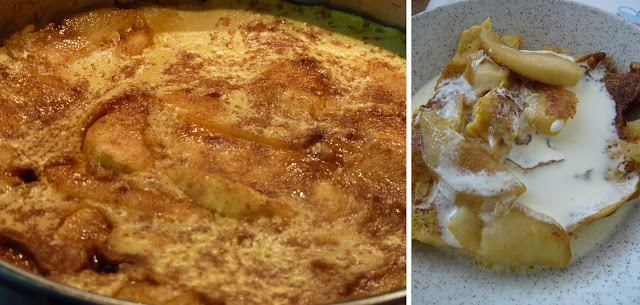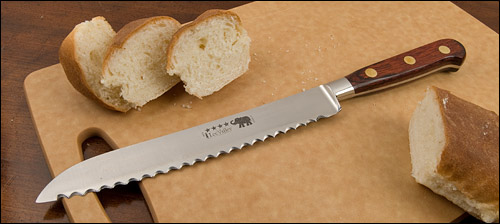Сборная мясная солянка.
Сборная мясная солянка это довольно трудоемкая затея, но со временем приобретается навык, и все получается быстрее, чем может показаться.
Уложиться в два-два с половиной часа вполне реально.
Главное - правильно организовать процесс, чтобы не упускать время на параллельные по сути технологические процессы.
Я для себя разработал следующую методу, которая вполне работает:
Начинать надо с варки бульона - какая угодно говядина(лучше с косточкой)варится совершенно обычным образом часа два.
Я варю в скороварке час.
Поставив бульон вариться, вы развязываете себе руки для других занятий.
Продолжать стоит приготовлением почек.
Почки - обязательный элемент солянки и без них не получится придать конечному продукту нужный аромат и консистенцию.
Вопреки распространенному мнению,
вымачивать почки не нужно.
В случае
свиных почек достаточно порезать их пополам.
В случае
говяжьих придется разрезать их на большее количество частей и тщательно вымыть.
Протоки необходимо удалить - они не украсят блюдо.
После этого почки надо положить в отдельную кастрюльку, залить холодной водой и поставить вариться.
Как только вода закипит, кастрюльку надо снять с огня, воду вылить а сами почки обильно промыть горячей водой из под крана.
Процедуру придется повторить еще раз, т.е. снова залить почки холодной водой, поставить кастрюльку на огонь, дождаться закипания и по новой - воду выливаем, промываем, заливаем и ставим снова вариться.
По количеству продукта действует правило - одна свинья - одна солянка, или одна корова - две солянки.
Окончательная варка почек занимает примерно минут 40, после чего воду снова надо слить, сами почки остудить и
нарезать мелкими кубиками со стороной 7-8мм.
Пока варятся почки, можно заняться овощами.
Бытуют различные мнения о желательности присутствия в солянке картошки и квашеной капусты.
На мой взгляд от этих ингредиентов стоит отказаться и
ограничиться солеными огурцами, морковью и луком.
Если они вдруг оказались в хозяйстве,
можно использовать и белые коренья - петрушку, сельдерей, пастернак, но их присутствие не императивно.
Морковь и лук нужно почистить и отложить до лучших времен.
На кастрюлю в 4 литра (просто у меня такая) нужна одна крупная морковина и 3 луковицы обычного размера.
Англичане сказали бы "of reasonable size".
Огурцы должны быть
только соленые, маринованными можно все испортить.
Должно их быть штуки 3, также "разумного" размера.
С них надо срезать кожицу и не выбросить ее, а положить в маленькую кастрюльку, зачерпнуть половник бульона из кастрюли с мясом, залить кожицу и поставить варить на очень маленький огонь минут на 20. Некоторые варят час, но мне кажется, что это уже перебор.
На этом этапе почки у вас скорее всего уже сварились и вы можете заняться их нарезкой.
Нарезанные почки перекладываем на блюдце и отставляем в сторонку.
После почек нужно вернуться к моркови с луком.
Морковь крошится кубиками, лук мне нравится нарезать перьями.
Должным образом порезанные корнеплоды перемещаются на сковородку с прокаленным растительным маслом и пассеруются на несильном огне минут 10 до приятной румяности.
Теперь в дело вступают помидоры или томатный сок или томатная паста или томатный соус по вашему выбору.
Соус должен быть без ярко выраженного собственного вкуса.
Помидоров нужно 2 круглых или 4 продолговатых.
Не используйте сорта типа "Бычье сердце" - они слишком дороги и достойны лучшего применения.
Их нужно поместить в миску и залить кипятком, в котором и оставить на 2-3 минуты.
По истечению этого времени кипяток нужно слить, а помидоры залить холодной водой.
Холодную воду тоже выливаем, а с помидоров теперь легко снимется кожица.
Сняв кожицу, нарежьте помидоры небольшими кубиками и отправьте их на сковородку к моркови с луком, которые, как вы помните, уже приобрели приятную румяность.
У вас будет
значительно меньше проблем при использовании томатного сока (примерно стакан, т.е. 250мл),
или томатной пасты - 3 столовые ложки, или томатного соуса - полстакана, но живые помидоры как-то правильнее, вкус существенно улучшится.
Тушить морковь, лук и помидоры нужно минут 5.
Почему-то мне нравится в них же класть и всю норму специй, т.е. 3-4 лавровых листа, десяток горошин черного перца и чайную ложку зерен кориандра.
Перец и кориандр лучше растолочь в ступке непосредственно перед закладкой и высыпать в сковородку, когда помидоры закипят.
Вернемся к бульону, который уже практически сварился (в моем случае использования скороварки).
Мясо из бульона надо вынуть, а сам бульон процедить через мелкое сито (а лучше через мокрую полотняную салфетку в дуршлаге) в другую кастрюлю.
Ту кастрюлю, которую вы использовали изначально, надо вымыть, снова поставить на плиту и налить в нее процеженный бульон.
Пусть снова закипает.
К сваренному мясу надо отнестись критически, т.е. кости однозначно выбросить, предварительно с удовольствием обсосав, а оставшиеся компоненты или вообще предназначить к другой цели, или, если это возможно, нарезать небольшими аккуратными кубиками.
Далее в бульон можно класть или не класть другие мясопродукты.
В этом процессе нет обязательности.
Можно, конечно, собрать в холодильнике все обрезки от колбас, копченостей и сосисок (что удобно), мелко накрошить их и отправить в бульон.
Многие любят привкус копчености в солянке и отказать им в правоте нельзя.
Тем не менее использование обрезков нельзя считать непременным условием приготовления правильной солянки.
Без этого можно и обойтись, хотя сам процесс и не сложен.
Просто если у вас вдруг не нашлось обрезков, то и не страшно.
Конечно, пуристы могут тут сказать, что бульон для солянки вообще варится из свиных ребер с курицей, но эти заявления можно отмести, как беспочвенные.
Короче, мясные обрезки действительно придают солянке определенный шарм, но их присутствие не критично.
Итак, наступает давно ожидаемое завершение процесса.
Высыпаем в кипящий бульон протушенные
морковь, лук и помидоры.
Даем снова закипеть.
Отправляем туда же почки и мясные обрезки, если таковые имеются.
Снова даем закипеть.
Кладем накошенные кубиками
соленые огурцы и выливаем туда же бульон от огуречной кожицы (в этом процессе есть что-то эзотерическое, но именно так и надо делать).
Высыпаем в солянку приличную жменю маслин и хотя бы 2 столовые ложки каперсов, причем освободившийся рассол от каперсов обязательно льем туда же.
Появляется примерно 5 минут свободного времени.
Но тут мы не отдыхаем, нет, а срезаем
цедру с половины лимона, нарезаем очищенную часть тонкими ломтиками и забрасываем их в кастрюлю.
Солянка практически сварена.
Остается утереть трудовой пот, попробовать продукт на соль (финальная соленость в значительной степени зависит от засола огурцов и количества обрезков) и, при необходимости, досолить.
Вот теперь вы можете с облегчением вздохнуть и потратить следующие 5 минут на созерцание плодов своего труда, пока раззадоренные запахами голодные родные и близкие не прорвутся в кухню.
Повторюсь, но 2 часа практически вполне достаточны для завершения этого непосильного труда.
Сборная мясная солянка – не срезая углов.
На основной бульон пошла телячья голяшка – очень удобная штука, практически без жира, бульон прозрачный и очень наваристый, клейкий.
Варил бульон просто с солью, без специй-пряностей. В скороварке сварился за час, после чего процедил, кости-мясо с голяшки отправил в миску в холодильник до лучших дней – урчать буду потом и есть над чем, надо сказать.
За это время очистил от плёнки бараньи почки (самые чистые из всех возможных), разрезал пополам, вырезал протоки и сварил в двух водах.
Остудил немного и порезал ломтиками.
Во втором действии в процеженный кипящий бульон отправился кусок постной говядины, мало к чему пригодный кроме такого применения – жёсткий, но зато не разваливается, что и было нужно.
С ним вместе варились морковина, корень сельдерея и зелёная часть порея, ямайский перец, гвоздика, лавровый лист.
Опять же в скороварке, 25 минут.
Параллельно почистил кожицу с нескольких солёных огурцов (ещё винегрет с ними же готовился) и припустил в стакане воды минут 10-15.
Нарезал кубиками ещё одну крупную морковь, две луковицы и пассеровал их медленно вместе, к ним же добавил нарезанные почки, поджарил немного вместе и добавил накрошенный помидор, протушил под крышкой с чёрным перцем и кориандром (немного).
Мелкие солёные огурцы, не очищая, порезал ломтиками.
Бульон второй закладки снова процедил, овощи повыкидывал, а отварное мясо немного остудил на подоконнике, после чего нарезал аккуратными кубиками, лохмотья и обрезь просто сожрал под кружку пива – не пропадать же добру.
Такими же кубиками нарезал грамм 200 свиного плеча – испанская типа ветчина.
Почему то дешевле нашей, и ничем не хуже, но сойдёт почти любая приличная ветчина.
Бульон у меня снова закипел, и добавил пассерованные лук-морковь-почки-помидор, проварил минут 7-10, и закинул маслины и каперсы.
Почти сразу после них влил отвар из огуречной кожицы, засыпал резаные огурцы, дал вскипеть и заложил говядину и ветчину.
Слегка покипело ещё минуты 2-3, добавил лимон ломтиками, ещё минута и выключил.
Всыпал тонко нарезанную красную луковицу и размешал – это существенно украшает вкус.
Дал постоять – отдохнуть минут 10 под крышкой и стал разливать.
Посыпал укропом.
Выводы и предложения:
Солянка получилась на самом деле взрослая, очень хорошего уровня, через час стала ещё лучше.
Из вариаций подумываю о том, чтобы в следующий раз сделать
на красном бульоне – запечь предварительно ту же голяшку с кореньями.
Может быть, это и излишне, но ИМХО стоит попробовать.
Опять же классический вариант – бульон на говяжьей лопатке и сырой ветчине – он ярче по вкусу, но белый телячий (fond de veau blanc) заметно крепче, а красный телячий может по яркости вкуса и не уступить. К тому же удобно, что не надо снимать жир.
Где-то так.
UPD: Хотел добавить грибов, но из солёных оказались в наличии только чёрные грузди.
Воздержался, всё же вкус у них слишком яркий.








